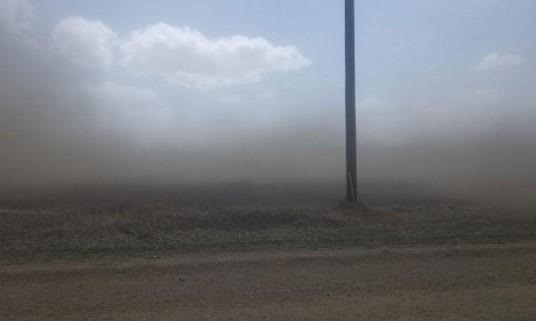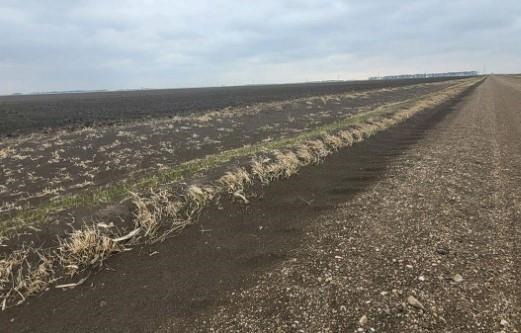By Anthony Bly
Topsoil is geology modified by biology, physical and chemical processes. Without topsoil, our planet would be just rocks and dust with no meaningful life. We all should know where our food comes from. The thin layer of topsoil covering our earth gives and sustains almost all of the life we know. It is basic knowledge that a handful of soil contains billions of bacteria, protozoa, fungi, nematodes and earthworms to name a few.
Topsoil Questions Answered
Why do we treat our topsoil like dirt?
Everyone has seen the dirt blowing because of all the wind we have experienced this spring (Figure 1).
Soil out of place is dirt! If it is so critical to our existence, why do we just accept it when we see wind or water erosion?
It is not the wind or rain’s fault when erosion occurs. Soil erosion is a direct result of poor land management choices!
Ground cover (armor) with plants (dead or alive) anchored into the soil are required to stop erosion. Topsoil armor reduction is a result of too much tillage or over grazing. Fields managed with topsoil armor in mind have greatly reduced erosion.

Figure 1. Blue sky with some clouds. Lower horizon is a tilled field with dirt/dust in the air beneath the clouds, actually blackening out the blue sky near the earth’s surface.
What is the value of topsoil?
It is common knowledge that it takes a considerable amount of nutrients to grow field crops and food. We measure the soil’s ability to provide plant-essential nutrients through soil testing procedures.
Even though our plants get the carbon needed for building dry matter from the air, we know that soils higher in carbon are generally the most productive and fertile. All we have to do is measure the value of our topsoil.
Recently, samples of the soil (dirt) blown into the road ditch were analyzed for nutrient concentrations similar to the situation in Figure 2.

Figure 2. Gravel road looking into tilled field with dirt blown into a ditch and onto the edge of a gravel road.
Is the dirt in the road ditch the best or worst topsoil from the adjacent field?
With absolute confidence, we know this is the best topsoil from the adjacent field. Table 1 shows the nutrient concentrations and monetary values for each measured parameter, considering 1 inch of topsoil across 1 acre.
TABLE 1. VALUE OF 1 INCH OF TOPSOIL ACROSS 1 ACRE.*
| Parameter | Soil Test Result | Market Value | Soil Value ($) |
|---|
| Olsen P (ppm) | 76 | $0.75/lb P2O5 | 40 |
| Extractable K (ppm) | 651 | $0.65/lb K2O | 155 |
| Zinc (ppm) | 2.1 | $3.00/lb | 1.91 |
| Carbon (%) | 3.3 | $100/ton CO2 | 1831 |
| Organic N (%) | 0.31 | $1.00/lb | 939 |
| - | Total value of 1 inch of topsoil across 1 acre = | $2967 |
| - | Value for growing an excellent crop = | Priceless |
*1 inch of soil across 1 acre = 303,000 lbs.
Source : sdstate.edu